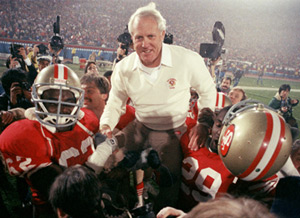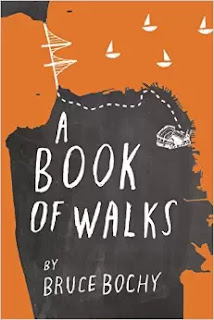An associate found a classic 31 pager on the perspective of Sunzi's essay from the western mind. It was published by Alastair Iain Johnston (江忆恩) of Harvard University in July 1999.
Click here for part 1.
Scroll down for part 2 of this document
SUN ZI STUDIES IN THE UNITED STATES
by Alastair Iain Johnston 江忆恩
Associate Professor
Government Department
Harvard University
July 25, 1999
SUN ZI STUDIES IN THE THE ACADEMIC COMMUNITY
Sun Zi studies are limited to a small community of
Sinologists, historians and philosophers in the U.S. There has been relatively
little direct research on ancient Chinese military thought, still less on Sun Zi
specifically. For example, there were no articles devoted to the study of Sun Zi’s thought in
the 1980s and 1990s issues of the premier journal on pre-modern China, the
Harvard Journal of Asiatic Studies, and there were only a couple of articles on
ancient Chinese military thought. A search of the index of articles for another
high-profile journal, The Journal of Asian Studies also shows no articles
specifically about Sun Zi,
nor indeed about ancient Chinese military thought in general. 11
There have been at about 5
major PhD dissertations on ancient Chinese military thought since the 1970s
that all, in one way or another, discuss Sun Zi. One by Christopher Rand, focused on six
different ‘schools’ within ‘militarist’ (bingjia 兵家) thought
up to the Han Dynasty. 12
In particular he traces the
historical evolution of the ‘wen’ (文) versus
‘wu’ (武) debate
in statecraft. He extends this analysis up to the Tang Dynasty as well to see
how this debate evolved in an era of very different military technology and
military strategic challenges. In particular he identifies and expands on what
he calls the ‘metaphysical’ school of military affairs in the Tang, the school
which stressed the metaphysical qualities (qi 气) of an ideal
general. 13
Another,
by Robin Yates, focused on theory and practice of siege defense in ancient China, based on
an analysis of the writings of Mo Zi and his
disciples. 14
Another
by Edmund Balmforth provided the first English-language translation and
analysis of Sun Bin’s work on strategy. 15
Alastair
Iain Johnston’s dissertation analyzed the Seven Military Classics (武经七书) to determine
what influence they had on Ming strategy towards the Mongols.16
Likewise,
David Graff analyzed the effect of ancient Chinese military thought on the ways
of warfare during
the Tang dynasty. He found that practical experience was more likely a better
source of strategic ideas than Warring States period texts. 17
In
addition to these dissertations there have been a small number of specialized
books published on topics relating to ancient Chinese military thought. In his
book, Sanctioned Violence in Early China , Mark Lewis examined the role of
‘sanctioned violence’ in the political transitions from the Spring and Autumn
to the Warring States period. He shows how sanctioned violence evolved from a
highly ritualistic and symbolic use of hunting, limited engagements among
warrior aristocrats evolved into larger-scale ‘interstate’ conflicts involving
mass soldiers commanded by more or less professional officers. Lewis is the
first US
scholar to extract and examine
the concept of quan bian, and
its impact on military thought and practice in early China. 18
In
his book, Cultural Realism, Alastair Iain Johnston examined the role of
strategic culture in strategic decision making during Ming conflicts with the
Mongols. He analyzed the ‘deep structure’ of the Seven Military Classics to see
whether there was a consistent preference ranking among offensive, defensive
and accomodationist
grand strategies across these texts. He then asked whether these preference
rankings had any effect on strategic choice in the Ming dynasty. His
conclusions challenged the traditional view that ancient Chinese military
thought stressed defensiveness and even an anti-militarism.
19
Instead,
he argued, these texts embodied certain realpolitik axioms, similar to those in
Western strategic thought, and that their influence was seen in the fact that
Ming strategists generally preferred, when
material conditions allowed them, offensive strategies to deal with the Mongol
threat. 20
Johnston argues that
the traditional Confucian view of China’s own strategic traditions
underestimate the degree to which the offensive use of military force was
advocated in traditional Chinese thought and practice. This argument is
controversial and at the moment is a minority interpretation of Sun Zi and
other ancient Chinese military thinkers.
But
together this research does not constitute a coherent body of work, nor are the
authors addressing similar issues. Indeed there is little direct debate over
the Sun Zi
text because there has been so little written on the topic in the Sinological
community. The research in the 1980s through 1990s has generally not focused on the
intellectual or philosophical content of ancient Chinese military thought.
Rather it has tended to focus on on military history and operations (Tang, Song
and Ming strategy). 21
In
the 1990s, a group of historians and scholars of Chinese philosophy set up a
Chinese Military History Group. But Sun Zi’s military thought is not the primary focus of
this group. The underdeveloped nature of Sun Zi studies in the scholarly community is underscored
by the fact that there been no major scholarly conferences
in the US
focused on Sun Zi’s
text in the 1980s or 1990s. There is the potential for a major debate over the Sun Zi text as a
pragmatic source of more or less universal ideas for military strategists
versus its status as a uniquely Chinese philosophical text on violence. The
lines of such a debate are evidenced
in the differences between the approach to the text taken by Ralph Sawyer and
by Michael Handel (see below) on the one hand and Roger Ames on the other.
However, this potential faultline in Sun Zi studies has not really developed into a
full-blown academic debate. There are simply too few people in the
academic world working on these issues, and too little is at stake currently in
terms of intellectual development for scholars to stake a position one way or
the other.
SUN ZI AND THE BUSINESS
WORLD
There
has been an increase in the popular attention paid to Sun
Zi and business over the 1980s and
1990s. Mostly Sun Zi
is treated as a source of ideas about how to understand market opportunities.
One author, Bernard A. Boar models his book, The
Art of Strategic Planning for Information Technology on the Sun
Zi text. 22
Boar
argues that “The
majority of aspiring strategists would be much better off studying the
teachings of Sun Zi
and Machiavelli than most teachers of business or information management
strategy.”
In
most cases, however, the application of Sun Zi to business tends to be somewhat faddish and
shallow, the reduction of the text to easy-to-remember aphorisms and
platitudes. While many business people have read the text, it is not the
subject of study in major US
business schools. In contrast to the US military education
system, the US
business education system evidently does not find much concrete value in the
text as a source of instruction for future business leaders. Top American
business schools put a great deal of emphasis on training in accounting,
economics, statistics, and organizational sociology. 23
The
adaptation of strategy from war studies to business is not seen as a particular
important part of professional
business education, and there are no courses devoted to the discussion of Sun Zi’s
application to business in the major schools. There are, for instance, no
specific courses devoted to Sun Zi and business taught at the Harvard School of
Business or at MIT’s Sloan School of Management.
A handful of business entrepreneurs offer
short-term training programs, books, and cassette tapes that apply Sun Zi in a facile
way to some aspect of business. The objective is almost always to make money by charging for these
services.24
Typical of the application of Sun Zi to business is the consulting service provided by
Jim Hight, a former financial consultant to the Merrill Lynch company.25
Hight defines the ‘enemy’ in markets as other “participants”, such
as firms and companies. He uses quotations from the
Clavell, Griffiths
and Sawyer translations of Sun Zi. His approach is to move through the Sun Zi text
translating each major line or concept into an analogical example for financial
managers. For instance, in reference to Sun Zi’s comment in chapter one on the importance of
‘xian sheng er hou zhan’ ( 先胜而后战), Hight draws from this the
parallel advice in business: “Always
manage within the context of a written strategic plan that has been prepared
from an objective analysis of market information. The plan should
include very specific guidelines for money management, trade selection, risk
control, and profit taking.”
In
reference to Sun Zi’s
famous dictum that “deception is the essence of war”, Hight states: “Although,
as individual portfolio managers and risk managers, we have limited ability to
deceive and manipulate the markets, however, we can minimize the opportunity
for other market participants to impair our success by keeping
our strategies and tactics to ourselves. Allow strategies and tactics to become
apparent only when results have been secured and if disclosure enables rational
and gainful business development efforts, or when regulatory reporting
requirements necessitate.”
As another example, concerning the concept of
flexibility in Sun Zi’s
chapter 5, where the commander is urged to change operations as strategic
circumstances change, Hight notes in a rather vague way: “The way to capitalize
on the endless opportunities created by ever-changing market conditions, is to
become engaged as a part of a well thought out trading plan and be flexible in adapting
to conditions within the context of the plan. In so doing we will become a part
of the markets' energy flow and, thereby, continually improve our ability to successfully
understand and utilize market conditions to our advantage.” The advice is, like
the Sun Zi
text itself, general enough to be very hard to apply specifically in practice.
Interestingly
enough, the application of metaphors from war and conflict to business
introduces two tensions into the ‘ethics’ of business. The first is that in the
Sun Zi text
there is no developed concept of a ‘just war’. For Sun Zi the ‘ends justify the means’. Using warfare
metaphors, particularly from the Sun Zi text, raises
questions about whether Sun Zi-influenced business practices would be unrestrained
by business and societal ethics. The second, and related, tension is between
market economics conceived as a search for win-win, non-zero sum solutions to
contractual problems on the one hand, and economics conceived as a zero-sum
war where the objective is the defeat of all adversaries and competitors on the
other. In the US
the use of Sun Zi
as a guide to business often seems to promote this latter view of economics.
--- More to come ---
This post will be updated and refined later this week.

.jpg)












